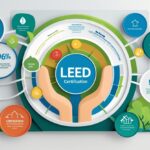Grid-Tied vs. Off-Grid Solar Systems: Which is Right for Your Home?
The sun shines brightly on a future where homes are powered by clean, renewable energy. As solar technology becomes more accessible and efficient, a crucial decision faces aspiring solar adopters: should you opt for a **grid-tied vs. off-grid solar system**? While both harness the sun’s immense power, they offer vastly different approaches to energy independence and reliability. Understanding these distinctions is key to making an informed choice that aligns with your energy goals, budget, and lifestyle. This comprehensive guide will illuminate the ins and outs of both grid-tied and off-grid solar solutions, helping you determine which path to solar power is the perfect fit for you.
Understanding Grid-Tied Solar Systems: The Connected Approach
A **grid-tied solar system**, also known as a grid-connected or on-grid system, is the most common type of residential solar installation. As the name suggests, these systems remain connected to your local utility grid, essentially using it as a giant, communal battery.
How Grid-Tied Systems Work
When your solar panels generate electricity, it typically flows through an inverter, which converts the direct current (DC) from the panels into alternating current (AC) suitable for your home’s appliances. Here’s what happens next:
- Powering Your Home: The electricity generated by your panels first powers your home’s immediate needs.
- Net Metering: If your panels produce more electricity than your home is currently consuming (e.g., during peak daylight hours), the excess power is fed back into the utility grid. Most utilities offer **net metering**, a billing mechanism that credits you for the electricity you send back. This credit can then offset the cost of electricity you draw from the grid at night or on cloudy days.
- Drawing from the Grid: When your solar panels aren’t producing enough power (e.g., after sunset, on heavily overcast days, or during periods of high consumption), your home automatically draws electricity from the utility grid, just as it always has.
Advantages of Grid-Tied Solar
- Cost-Effective Installation: Generally, grid-tied systems are less expensive to install upfront because they don’t require battery storage, which can be a significant cost component.
- Eliminates Need for Batteries: The utility grid acts as your energy storage. You essentially “store” excess energy by sending it back to the grid and drawing from it when needed. This simplifies maintenance and reduces system complexity.
- Net Metering Benefits: The financial incentives from net metering can significantly reduce or even eliminate your electricity bills, turning your meter backward and potentially earning you credits.
- Reliable Backup (with exceptions): You always have access to power from the grid, meaning you’re unlikely to run out of electricity. However, it’s crucial to note that during a grid outage (e.g., a power cut), most grid-tied systems are designed to shut down for safety reasons (to prevent back-feeding electricity to utility workers).
- Simpler Maintenance: Without batteries, there are fewer components to monitor and maintain.
Disadvantages of Grid-Tied Solar
- Vulnerability to Grid Outages: As mentioned, if the grid goes down, your grid-tied solar system will typically also shut down, leaving you without power. This is a critical consideration if you live in an area prone to frequent outages.
- Reliance on Utility Policies: The financial benefits of net metering can vary depending on local utility policies, which are subject to change.
For most homeowners looking to reduce their electricity bills and environmental footprint without completely detaching from the existing infrastructure, a **grid-tied solar system** presents a practical and financially attractive option.
—
Exploring Off-Grid Solar Systems: The Path to True Independence
An **off-grid solar system**, often referred to as a standalone power system, is designed for complete energy independence. These systems are not connected to the utility grid at all, meaning all your electricity must be generated and stored on-site.
How Off-Grid Systems Work
In an off-grid setup, solar panels generate DC electricity, which is then converted to AC by an inverter. However, the crucial difference lies in what happens next:
- Battery Bank: All excess electricity generated by your panels is stored in a battery bank. This energy is then drawn from the batteries when your panels aren’t producing (e.g., at night, on cloudy days).
- Charge Controller: A charge controller regulates the voltage and current coming from your solar panels to your batteries, preventing overcharging and prolonging battery life.
- Backup Generator (Optional but Recommended): Many off-grid systems include a backup generator (propane, diesel, or natural gas) to provide power during extended periods of low solar production or high demand, especially in winter months.
Advantages of Off-Grid Solar
- Complete Energy Independence: You are entirely self-sufficient, free from utility bills, rate increases, and grid outages. This is particularly appealing for remote properties where grid connection is expensive or impossible.
- Reliable Power During Outages: Unlike grid-tied systems, off-grid systems continue to provide power during blackouts, as they operate independently.
- Environmental Impact: Maximizing your use of renewable energy can significantly reduce your carbon footprint.
- Potential for Remote Living: Off-grid systems make it feasible to build homes and cabins in locations far from existing utility infrastructure.
Disadvantages of Off-Grid Solar
- Higher Upfront Costs: The inclusion of a large battery bank is a significant additional expense, making off-grid systems considerably more expensive to install than grid-tied ones.
- Complex Design and Installation: Designing an off-grid system requires careful calculations of energy consumption, solar production, and battery capacity to ensure reliability. Installation can also be more complex.
- Battery Maintenance and Replacement: Batteries have a finite lifespan (typically 5-15 years, depending on type and usage) and will need to be replaced, adding to long-term costs and maintenance.
- Energy Management Required: You’ll need to be more mindful of your energy consumption, especially during prolonged periods of low sunlight, to avoid draining your batteries.
- Less Efficient Use of Excess Power: Without net metering, any excess power generated beyond what your batteries can store is essentially wasted, unless you have a specific use for it (e.g., charging an electric vehicle).
An **off-grid solar system** is ideal for those seeking ultimate self-reliance, especially in remote locations, and are prepared for the higher initial investment and ongoing energy management.
—
Grid-Tied vs. Off-Grid: Key Decision Factors
Choosing between a **grid-tied vs. off-grid solar system** boils down to weighing several critical factors. There’s no one-size-fits-all answer; the best choice depends entirely on your specific circumstances and priorities.
1. Location and Grid Access
- Remote Areas: If your property is in a remote location far from existing utility lines, connecting to the grid might be prohibitively expensive. In such cases, an off-grid system often becomes the more economical and practical solution.
- Urban/Suburban Areas: For most homes already connected to the grid, a grid-tied system is usually the more straightforward and financially beneficial option due to net metering and lower initial costs.
2. Budget and Upfront Investment
- Cost-Conscious: If your primary goal is to save money on electricity bills with a lower initial investment, a grid-tied system is generally preferred.
- Long-Term Independence: If you’re willing to make a larger upfront investment for complete energy autonomy and are prepared for battery replacement costs, off-grid might be viable.
3. Reliability and Backup Power Needs
- Frequent Outages: If you live in an area with unreliable grid power and need continuous electricity, an off-grid system (often with a generator backup) offers greater resilience. Alternatively, a grid-tied system with battery backup (a hybrid system) can provide outage protection.
- Stable Grid: If your local grid is very stable and power outages are rare, the added cost and complexity of batteries for an off-grid system might not be necessary.
4. Environmental Goals
- Maximum Green Impact: While both systems reduce your carbon footprint, an off-grid system can provide a stronger sense of complete environmental independence.
- Financial and Environmental Balance: Grid-tied systems still significantly reduce your reliance on fossil fuels and are often the most practical way for the average homeowner to go solar.
5. Lifestyle and Energy Consumption Habits
- Conscious Consumption: Living off-grid often requires a more disciplined approach to energy usage, especially during cloudy periods. You become acutely aware of your energy consumption.
- Comfort and Convenience: If you prefer not to worry about managing energy consumption and simply want to offset your bills, a grid-tied system offers more convenience.
Consider these factors carefully to align your choice of **grid-tied vs. off-grid solar system** with your personal circumstances.
—
Hybrid Solar Systems: The Best of Both Worlds?
For those who find themselves caught between the two distinct approaches, a **hybrid solar system** offers a compelling middle ground. These systems combine the benefits of both grid-tied and off-grid setups.
- Grid Connection with Battery Storage: Hybrid systems are connected to the utility grid but also incorporate a battery bank.
- Backup Power: During a grid outage, the batteries can power essential loads in your home, providing crucial backup.
- Optimized Energy Use: You can program hybrid systems to store excess solar energy in batteries for later use (e.g., during peak utility rates), reducing your reliance on grid power even when the grid is active.
- Flexibility: They offer flexibility to sell excess power back to the grid (if net metering is available) and draw from the grid when needed, while still having energy independence.
Hybrid systems are a growing trend, offering the security of backup power combined with the financial benefits of grid connection. However, they come with a higher cost than standard grid-tied systems due to the batteries.
—
Making Your Solar Choice: A Step Towards a Brighter Future
The decision between a **grid-tied vs. off-grid solar system** is a significant one, impacting your energy independence, financial outlay, and daily routines. While grid-tied systems offer a practical, cost-effective entry into solar for most homeowners, off-grid solutions provide ultimate autonomy for those in remote areas or seeking complete self-sufficiency. For many, a hybrid system might be the ideal compromise, blending grid reliance with valuable battery backup.
Before making your final decision, we highly recommend consulting with reputable solar installers in your area. They can assess your specific energy needs, analyze your property’s solar potential, and provide detailed cost estimates for both types of systems, including any available incentives or rebates. Taking the leap into solar power is a powerful step towards a more sustainable and resilient future for your home. Which path will you choose?



